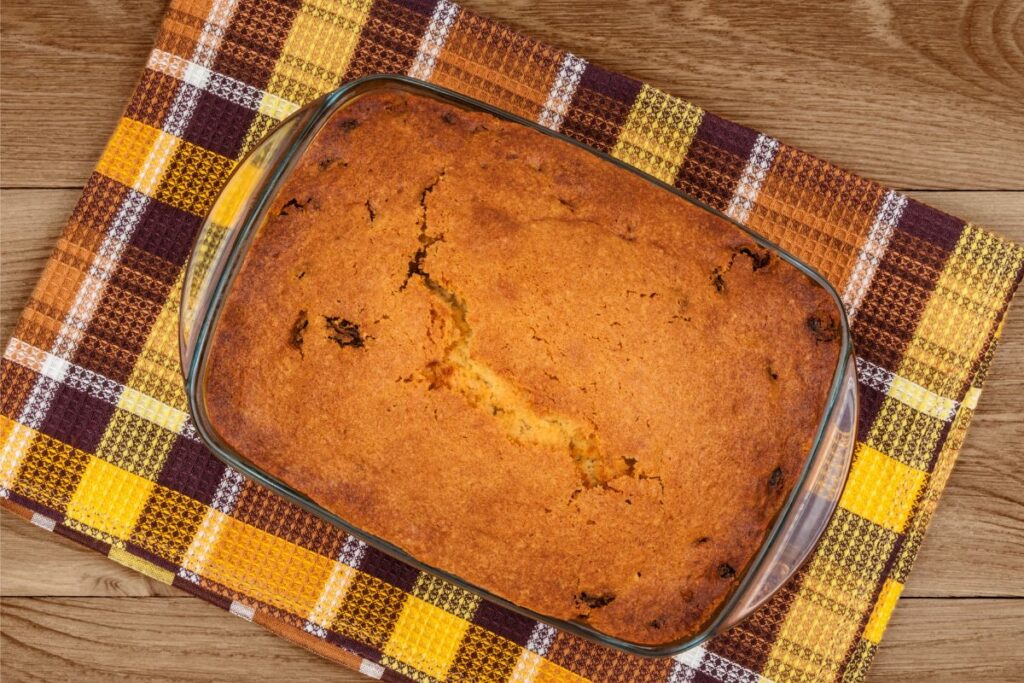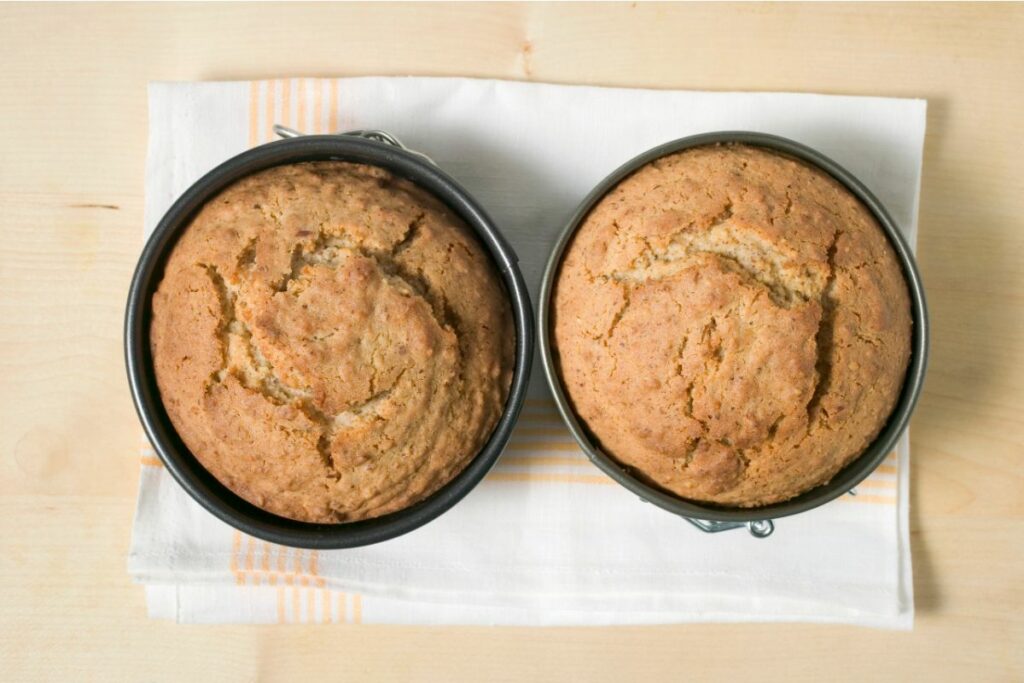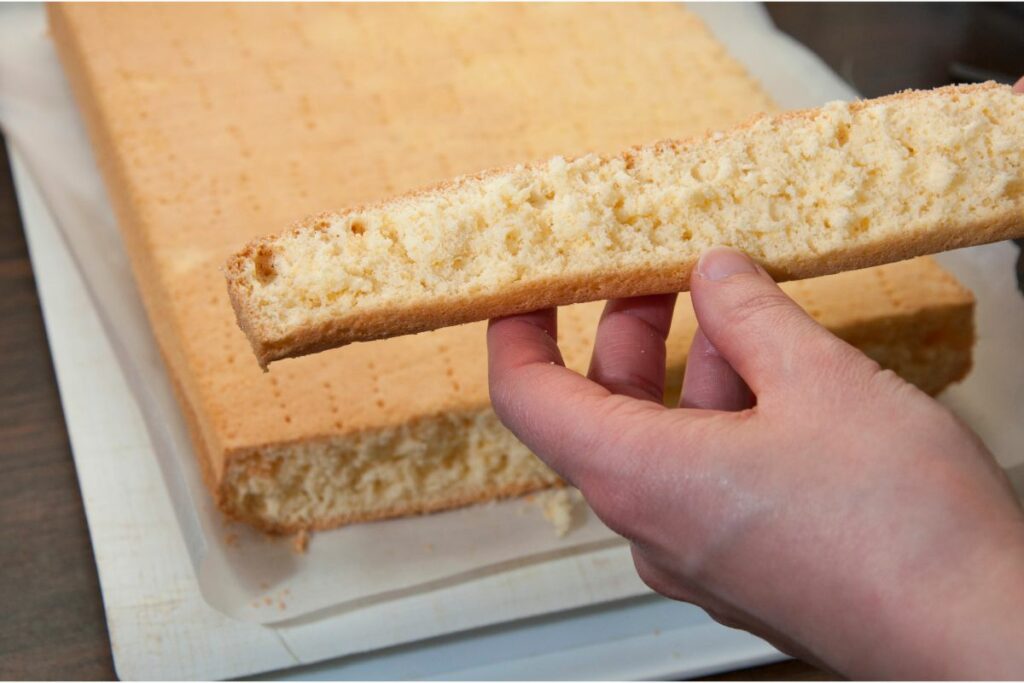A question all bakers have likely asked themselves before is how long will it take for their cake to cool?
As most veteran bakers know, this will nearly always depend on a variety of factors, this includes; what type of cake you have made, what size the cake is, and plenty of other variables.

If you are making homemade cakes, and especially if you are working with deadlines, knowing how long you need to let your cakes cool is incredibly important!
If you want to know how long it takes for your cake to cool, and even ways you can make it cool quicker, then this guide will give you all the information you need!
As well as telling you what you need to know when it comes to cooling your cake, we will also go over what you need to avoid doing.
Some strategies people use to cool their cakes can actually ruin their cakes, or at least make them worse, so knowing what not to do is just as important!
We have all tried at a formative age, to try and ice or frost a cake that is simply too warm. This always ends in disaster, especially if you are trying to get a specific look from the frosting, and especially if you want it to look neat.
Once you have made this mistake, you will simply never make it again. Every baker has done it once so it is nothing to be ashamed of.
But, the best way to avoid this while still baking efficiently is to know how long it will take for you to let your cake cool down, and if you can speed this up without ruining your cake!
So, of course you want to make sure that your cakes are completely cool before you add any frosting, so how long will it take for your cake to cool? As we mentioned before, this does depend on a variety of factors, however, we can give you a rough estimate.
If you have made a cake that is between 2 and 3 inches thick like most layers are, this will need somewhere between 2 and 3 hours to cool if you leave it in a room temperature room on the countertop, preferably on a cooling rack.
If the cake is thicker or dense it will take longer than a thinner or lighter one!
But, this can still vary based on a variety of factors, some which can be changed, and others which can not.
So, if you want all the information you can get about the nature of your cake, and how to help it cool quicker, then keep reading to get all the information you need!
Room Temperature For A Cake
One factor that is important to understand before getting any further in is what the best room temperature is for a cake, and what we are talking about when we mention room temperature.
There is actually quite a bit of debate surrounding what the ambient room temperature should be when we are discussing food, as well as what we want the temperature to be.
It is worth noting that the ambient temperature of a room is usually 68 Fahrenheit or 20 Celsius, but when discussing food, this is actually considered to be a tiny bit warmer at 70 Fahrenheit or 21 Celsius.
Because of this, you should keep in mind when baking that you will not want your cake to be any warmer than 68 to 70 Fahrenheit before you start icing it, or 20 to 21 Celsius.
What is worth noting is that the timing for icing and cutting is not the same, and you can cut your cake safely and efficiently as soon as 20 minutes after it has been cooled.
The main reason we want to let the cake cool before frosting and cutting is so it does not become a melted and crumbling mess, and so we can store it in a container without heat condensation!
Factors To Consider When Cooling A Cake On The Counter

As we mentioned in the introduction, there are actually quite a few factors that you want to keep in mind when baking and cooling your cakes, and these will impact how long your cake will need to spend on your counter while cooling.
When we are discussing a general cake, we will usually be referring to an 8 inch round layer which is about 2 inches thick. This will need around 2 to 3 hours to cool as we mentioned earlier.
However, always go for more cooling time than less if you do not want to risk the quality of your frosting.
However, we think it is useful to go through all the different factors that should be considered when you are cooling a cake. If you know these factors you can adjust this general cooling time to be more accurate for the type of cake that you are currently cooling.
Size Of The Cake
This might seem obvious, but some people overlook that even if the cake is the same thickness, if the cake is larger, it will take longer to become completely cool.
However, when we mention the size of the cake, we are also referring to the thickness of the cake, which is another factor you want to keep in mind.
This is why we would recommend cutting your cake layers in half (if this is what you want to do with it) after it has been cooling for about 20 minutes, and this will considerably reduce the cooling time!
So for example, something like a Texas sheet cake will be able to cool a lot quicker since it is baked in a sheet pan compared to something that is baked in a thicker dish like a loaf cake or pound cake.
And of course, small cakes like cupcakes will be able to cool a lot quicker. However, the differences between the cooling times are actually not that noticeable and you should not try to plan your life around them.
For example, the difference is only really noticeable when there are big differences in cake thickness.
A cake which is about an inch thick will take less than 2 hours to cool, and if it is around 2 to 3 inches, this will be around 2 hours. Now if the cake is closer to 4 inches, this will take about 3 hours, and any more than 4 hours, you will be getting closer to 4 hours.
So, when estimating how long it will take for your cake to cool, you want to consider the size and the width to help you along.
Environment In And Outside Your Kitchen
The weather and the temperature of where your cake is cooling will have a noticeable effect on the cooling time it will have. An obvious example is that a cake in a cool environment will cool a lot quicker than one that is in a warmer room.
The cake’s cooling time is also impacted by the humidity as well, so if you are living somewhere that is warm and humid, your cake will take longer to cool than somewhere that is cool and dry.
So, if you know you live somewhere where it is significantly warmer than average, add about an hour to the cooling time. And, if you live somewhere a bit cooler, then you can reduce it a little.
This is why we recommend identifying the warm and cool spots in your home or kitchen, and leaving the kitchen somewhere cooler so it can cool more efficiently.
For example, it is easy to just leave the cake somewhere near the oven where it cooled, however, you might not take into account how much ambient heat is coming from the oven.
Also, avoid keeping the cooling cake somewhere in direct sunlight, it is sometimes easy to forget just how much heat you can get from direct sunlight, so your cooling cake should avoid this.
In Or Out The Cake Pan
Something that people often overlook when they are cooling their cakes is the heat that the cakes will get if you leave them in their pan.
Of course this will depend on the type of cake, with some needing to stay in their pan after leaving the oven, while others need to be removed as soon as possible.
However, since the cake pans contain residual heat, this will keep your cake warmer for longer, slowing down the cooling process.
This is why, if you want your cake to cool as quickly as possible, you will want to invest in a wire cooling rack if you do not have one already.
If you take your cakes out of their pan and onto one of these wire racks, instead of leaving it in the pan it cooked in, you will save yourself a massive amount of time!
If you need to leave your cake in the cake pan instead of on a wire rack, this will add at least an extra half an hour of cooling time. Also, cooling your cake in the warm cake pan can sometimes lead to condensation making the bottom of the cake soggy.
The Right Way To Cool On A Cooling Rack
So, if you want your cake to cool as quickly as possible when it is done, then there are a few steps you will need to take.
Some of these steps are before the cake has even been baked, so make sure to read through these steps before you start baking so you can get the most efficient results possible.
Prepping The Pan
One of the best investments you can make if you want to make your baking a lot more efficient is to get a non-stick baking spray that you trust.
Some of the best baking sprays will actually contain flour, and these are perfect for ensuring that there is no sticking.
There are usually 3 different ways of preparing your pan when you are baking, you can use one of the aforementioned baking sprays, you can grease the pan and then flour it, or you could line your pan using parchment paper.
Our favorite method to go with is to use a combination of multiple methods, like using a spray to help your parchment paper stick to the sides of your cake pan as this will ensure that any cake batter that gets through the parchment paper will still not stick ensuring perfect results.
However, parchment paper is not an option for all cake pans, for example, bundt pans will not work with parchment paper, and with pans like this, this is where knowing how to grease your pan is even more important. We recommend using a brush to get in every crevice.
Keep In The Pan For A Little While
So, we mentioned that you should not let your cake cool in its pan since this will make it take longer to cool than usual. So, when should you take your cake out of the pan?
Turns out, you should still let your cake cool in the pan for about 10 to 20 minutes after you have taken it from the oven.
After this it will then be safe to take out of the pan without any issues. If you try to remove the cake too early, it can crumble and break, which is honestly one of the worst outcomes possible if you are looking for the perfect cake!
If you want to still speed up the cooling time, keep the cake pan on a cooling rack to help it reach room temperature quicker!
Cool On The Rack
So, if you are worried about your baking sticking to the sides of the pan, even if you have greased it properly. Then we recommend very slowly and carefully using a butter knife on the edges of the pan to help dislodge any cake that might have gotten stuck.
Another trick that can make getting your cake out of the pan a lot easier is the trick of putting the wire rack over the top of the pan and then flipping it over instead of getting lucky with flipping the cake pan onto the wire rack, this way there is a lot less pressure on the cake.
Another thing you want to keep in mind is that you want to be as careful as possible when you are taking the baking pan off the cake, this will ensure that you do not tear any pieces off the top of your cake and the top will be nice and smooth.
You will also want the cooling rack to be placed on a smooth surface, this will help the cake cool down a little quicker because the air circulation will be a lot smoother.
As we mentioned earlier, you can start to ice your cake once it has reached 70 Fahrenheit or 21 Celsius, however, you could also store it and then decorate it later instead, so what is the best way to do this?
First, once your cake has reached an appropriate temperature after cooling, you want to wrap your cold cake using plastic wrap. If you have enough, even double wrapping it might be preferable.
Once it is securely wrapped, you want to place the cake into an airtight container, if possible, to avoid stacking the cake layers.
Then you can store these at room temperature, or a freezer if you want them to last a little longer, but at room temp they will stay good and secure for at least a couple of days.
Speeding Up The Cooling

So, now you know how long it takes for your cake to cool if you let it cool naturally, what about if you want your cake to cool quicker? Luckily, if you are in a bit of a rush, there are a few different tips and tricks you can try out.
This section will go over a few of our favorite and most effective tricks, however, some of these are circumstantial, so keep this in mind, and read through each section carefully before you just go and try one.
In The Refrigerator
This might seem a little simplistic, but simply placing your freshly baked cake layers into your fridge will help speed up the cooling process. But how much faster will it be?
Your cake will be able to cool in about an hour (depending on the factors mentioned earlier) but the exact timing can vary.
However, if cooling cakes in the fridge is so much quicker, why do we recommend that you still try to cool your cakes on your countertop instead?
The main reason is that if you cool your cake in the fridge, there is a higher chance that your cake will dry out, and this is even more likely if your cake has not been frosted yet. And if you are reading this guide, it is likely that this is the case.
You will also notice that the cake it is more likely to dry out if it is not in an airtight container, however, since your cake it still warm, you do not want to put it in a container since this will cause a lot of condensation which will then make the cake soggy and difficult to work with.
There is also the chance that your cake might absorb other flavors inside the fridge, so if your cake has a very subtle flavor, there is a chance that your cake will absorb at least the scent of another ingredient out in your fridge.
Because of this, we only really recommend using the fridge if you are really in a rush to store or ice the cake, or if you are sure there is nothing in the fridge that will be absorbed by the cake.
Before you put your cake in the fridge, you still want to leave it on the counter in the pan for at least 10 minutes, but preferably 20.
This is because the cake will be too hot to put in the fridge at this point, and you want to be able to take the cake out of the pan without it losing its form.
Then, you can put it on the wire rack using our advice from earlier in this guide, and then you can put this rack in the fridge. Then after an hour or so, the cake should be cool, but do not leave it in much longer, otherwise it will dry out!
However, if you have unfortunately let your cake dry out, whether this is from spending time in the fridge, or whatever other reason, there are methods you can use to make it moister again.
For example, you can brush the cake when it is cool using just a simple sugar syrup. This will add moisture back into your cake.
You can then add a thin layer of frosting, and this will seal in the moisture if you want it to go back into the fridge later on in the process, this is called a crumb coat.
Cooling In The Freezer
So, if the fridge is not cool enough for you, then you can instead try using the freezer instead. This is the fastest method available, however, just like using the fridge, there are some caveats.
However, one positive off the bat is that it will not dry out uncovered cakes like your fridge will, so this is a positive, however this is only if you do not keep it in the fridge for too long. So, if you cool your cake in the freezer, it should be cool in about 30 minutes.
However, we want to reiterate that the best way to cool your cake is on the countertop at room temperature. The main reason for this is that if you use the freezer, there is a good chance that your cake’s texture will be changed, temporarily, or permanently.
But, if you need it cool soon, then the freezer is definitely the way to go. This is especially true if you live in a warm climate since the cake will defrost quickly.
The best way to cool your cake in the freezer is to first, remove your cake from the oven, and let it sit on a wire rack in the pan, for at least 10 minutes, sorry this cannot be skipped as otherwise your cake will likely fall apart.
Then you can put your cake on your wire rack, and then find somewhere stable in your freezer. If you know there is some food in the freezer you can leave out for 30 minutes, this is when you want to take it out.
Make sure when taking out after 30 minutes that the whole of the cake is cool, not just the top!
The main reason for this is that sometimes the outer part of your cake might feel a little cool when you touch it, but then the rest of the cake will be warm on the inside.
This inner heat will then work its way out and warm the rest of the cake. Because of this, we recommend testing the cake with a thin knife or a toothpick to see if there is any residual heat.
Make sure you leave the toothpick or knife in for at least a few seconds to let it absorb any heat,
Also, while you do not have to worry about your cake getting freezer burn for cooling, if you know you are going to let your cake stay in the freezer for the long term, then you will want to ensure that it is cool before freezing.
Moreover, if you want your cake to stay in the freezer on the long term, then we also recommend getting it in some plastic wrap. This will ensure that the cake layers have a little bit of protection, and will prevent any cross contamination.
Covering A Warm Cake
So, you have finished your cake, and it has just gotten out of the oven, you are about to head to sleep, and you want to ensure it does not get picked at by bugs, or will dry out overnight.
The natural instinct is to cover it with something like a kitchen cloth or plastic wrap, however, we strongly recommend against this. This is because if you wrap a warm cake with plastic wrap or something similar, especially for an extended period of time, it will get soggy.
This is the same if you put it in a container while it is still warm.
We will always recommend a clean cloth over a cake. This gives it more room to breathe without getting soggy but also without getting dry.
Fixing Dried Out Cake

So, if you have left your cake out overnight, and it has dried out, what do you do? Luckily there are a few ways you can fix this. If you are unsure whether your cake is dry or not, the most noticeable area the dryness will be is on the edges.
So, if you have tested to see how dry the edges are, then what do you do if you want to add some moisture back into the cake.
Luckily this process is actually quite simple, all we do to add some moisture back is to wrap up the cake in just a couple of layers of plastic wrap, and then put this wrapped cake in an airtight container.
Once you have done this just leave it for about a couple of hours. After this it should be soft enough to work with. If it has not gotten back to the desired state, you can make a batch of simple syrup and then brush on a bit in the dry areas before you start to frost the cake and this should work perfectly.
Different Cakes Different Cooling Times
So, throughout this guide, you might have wondered if the type of cake you are cooking will have an effect on how long it will take to cool.
And yes, it will, the main reason for this is that different types of cake tend to have different densities and different properties that will affect their ability to retain heat, and because of this they will take longer or shorter when it comes to cooling.
Before we go into more detail on each type of cake, let’s give you a quick overview on how long an average size cake of each main type will take to cool!
An average sponge cake will usually need the standard 2 to 2 and a half hours to cool, while a bundt cake will usually need longer at about 3 to 3 and a half hours.
An angel food cake usually needs between 2 and a half and 3 hours to cool, while a loaf cake will need between 3 and 3 and a half hours.
A chiffon cake takes between 2 and 2 and a half hours, while a simple cake roll only needs between 1 and 1 and a half hours. Both a pound cake and a fruitcake need between 3 and 4 hours to cool, while a baked cheesecake needs between 3 and 3 and a half hours.
Chocolate cakes usually need between 2 and a half hours and 3 hours to cool, and the same is true for carrot cake as well.
Cake which you use in cake pops will usually need 2 to 2 and a half hours to cool, and a 9 x 13 size cake will need between 2 and a half and 3 and a half hours to cool depending on the type of cake.
Both an 8 inch round cake and a 9 inch round cake will take between 2 and a half and 3 hours to cool with 8 inches being a little shorter and 9 inches taking a little longer. Let’s go into detail on the specifics of each type!
Time For Chocolate Cake To Cool
Chocolate cake is an incredibly popular flavor, and baking it fresh yourself is an amazing experience, but how long will it take to cool?
If you are leaving it in standard room temperature on a countertop, depending on size, and the specific type of chocolate cake, it should take between 2 and a half and 3 hours to cool.
Also, try to keep it in the pan for at least 15 minutes after leaving the oven until you remove it from the tray.
If you need it quicker, you can use the fridge or freezer, but make sure to read the section earlier in the guide about using these methods so you can be careful and not ruin your cake!
Time For Carrot Cake To Cool
Carrot cake is another one of our favorites, and it actually has quite a similar density to a chocolate cake, so the cooling time is similar.
If you want to know how long it will take to cool on a wire rack after leaving the oven, this will take between 2 and a half and 3 hours depending on the thickness and size of the cake.
Make sure to leave it in the cake pan for at least 15 minutes trying to get it out so it does not crumble or stick.
Time For 9 x 13 Cake To Cool
One of the most common tray bake sizes which you will cook cake in is a 9 x 13 cake that is made in a Pyrex pan. However, these cakes usually take a while to cool since it is preferable to keep them inside their pan until they reach room temperature.
Because of this, it will take between 2 and a half and 3 and a half hours for your 9 x 13 cake to cool. The reason why there is a wide variable is that different types of 9 x 13 cakes will take longer or shorter to cool.
Also, do not try to cool these in the fridge or freezer since the bottom will get soggy. If you really want it done quicker, carefully remove the cake from the pan and let it cool in a cooler cake pan of the same size so it retains its shape.
Time For Cake Pops To Cool
It is very rare to actually cook cake pops in the pop shape that they come in unless you have a dedicated machine for this. Instead, the most common method is to make a sheet of cake and use the cake from this to make your cake pops.
This type of cake will usually take between 2 and 2 and a half hours to cool depending on the cake type, however you can actually speed this process up.
Simply let the cake cool as usual in the pan for about 15 minutes, and then take it out and cut into smaller pieces that will cool a lot quicker.
Time For Sponge Cake To Cool
A sponge cake, in spite of usually being quite thick, does not have a very long cooling time compared to similar sized cakes, because they are so light.
You will want to leave them in their baking tin for around 10 minutes before you remove them. After this they will take between 2 and 2 and a half hours to cool.
Since this type of cake does not need to be left in its pan, once it has been removed, you can let it cool in the fridge or freezer if you want it to cool a little quicker!
If you want this process to speed up a little, you can carefully cut the cake into layers if this is something you want for the final product. Then these thinner layers will be able to cool even quicker. But make sure you can handle the cake comfortably.
Time For Bundt Cake To Cool
Bundt cakes can be quite challenging to make with how tricky they are to remove from their pan sometimes. They also have quite a unique shape which means that they are often iced in unique ways, or occasionally not iced at all.
However, if you are icing your bundt cake, first let it firm up in the pan for 15 minutes, and then try to remove it, after this it will take about 3 hours to cool. Also, do not leave it in the pan for too long otherwise the bottom will get soggy.
Time For Angel Food Cake To Cool
Similarly to a sponge cake, angel food cake is very light, and this is because it is made using whipped egg whites and does not contain any butter or oil either. This cake will usually take around 3 hours to cool due to its unique structure.
Also, when cooling this cake, you want to cool it upside down, otherwise it is likely to collapse. You also want to cool it in the pan so it will retain its shape.
However, you do not want to cool it in the fridge as you are leaving it in the pan and this can make it soggy and more likely to collapse.
Time For Loaf Cake To Cool
One type of cake that is quite common is loaf cake, these tend to be both tall and dense, and because of this have a slightly higher than average time to cool.
They usually take around 3 hours to get to room temperature, and keep in mind that even if the outside is cool, the inside might still retain heat, so use a thin knife or toothpick to test this!
Make sure to let the loaf cake cool in the pan for about 15 minutes before you turn it onto the wire rack.
Time For Chiffon Cake To Cool
Like an angel cake, you do not want to turn your chiffon cake out onto a wire rack since this will likely compromise its structure, instead leave it in the pan.
This is a very light cake like angel food cake, however, it is made with oil, baking powder, as well as whipped egg whites. This cake will take about 2 and a half hours to cool, and you can take it out of the pan after about half an hour.
We recommend against cooling your chiffon cake in either a fridge or freezer since this is likely to compromise the structure of the cake.
Time For Cake Roll To Cool
If you have never made any rolled cakes, these are made in a sheet pan, then while it is still warm it will get rolled into the right shape. Then it will cool and you can fill it with whatever filling you want.
The warm cake will take between an hour and an hour and a half to cool. You also want to chill the cake in the fridge for about 2 hours once it has been filled to get it secure before it is served.
Make sure to be extra careful when you are rolling the cake not to crack it!
Summary
Hopefully this guide has given you all the information you need when it comes to cooling your cake, and what you can do to make this process more simple and quicker.
There are plenty of different options when it comes to speeding up the cooling process, so take into account your circumstances, because there is no reason to risk the quality of your cake if you do not actually need it ready to frost soon.
Also make sure to take our storage advice to heart too as this can drastically increase the lifespan of your cakes!
Frequently Asked Questions
We recommend against leaving your baked cake in the oven, and this is for a simple reason. Most ovens will retain heat for up to an hour after baking, so if you leave a baked cake in there after it is done, it will slowly continue to bake.
Because of this, if you leave your cake in for more than a couple extra minutes, it will start to dry out and potentially burn.
You do not want to cover a cake without airflow while it is still cooling. This will slow down the process of cooling. On top of being slower, it will also make the heat around the cake start to condense making it soggy and less appealing.
If you really need to cover it, lightly drape it with a clean kitchen towel, this will allow air flow while also covering it. However, ensure it is clean as you do not want your cake to absorb any flavors left on the kitchen towel.
- How To Reheat A Cheesesteak - November 5, 2023
- What Are Three Must Have Kitchen Knives? - September 22, 2023
- How To Protect Edges Of Pie Crust - June 15, 2023








